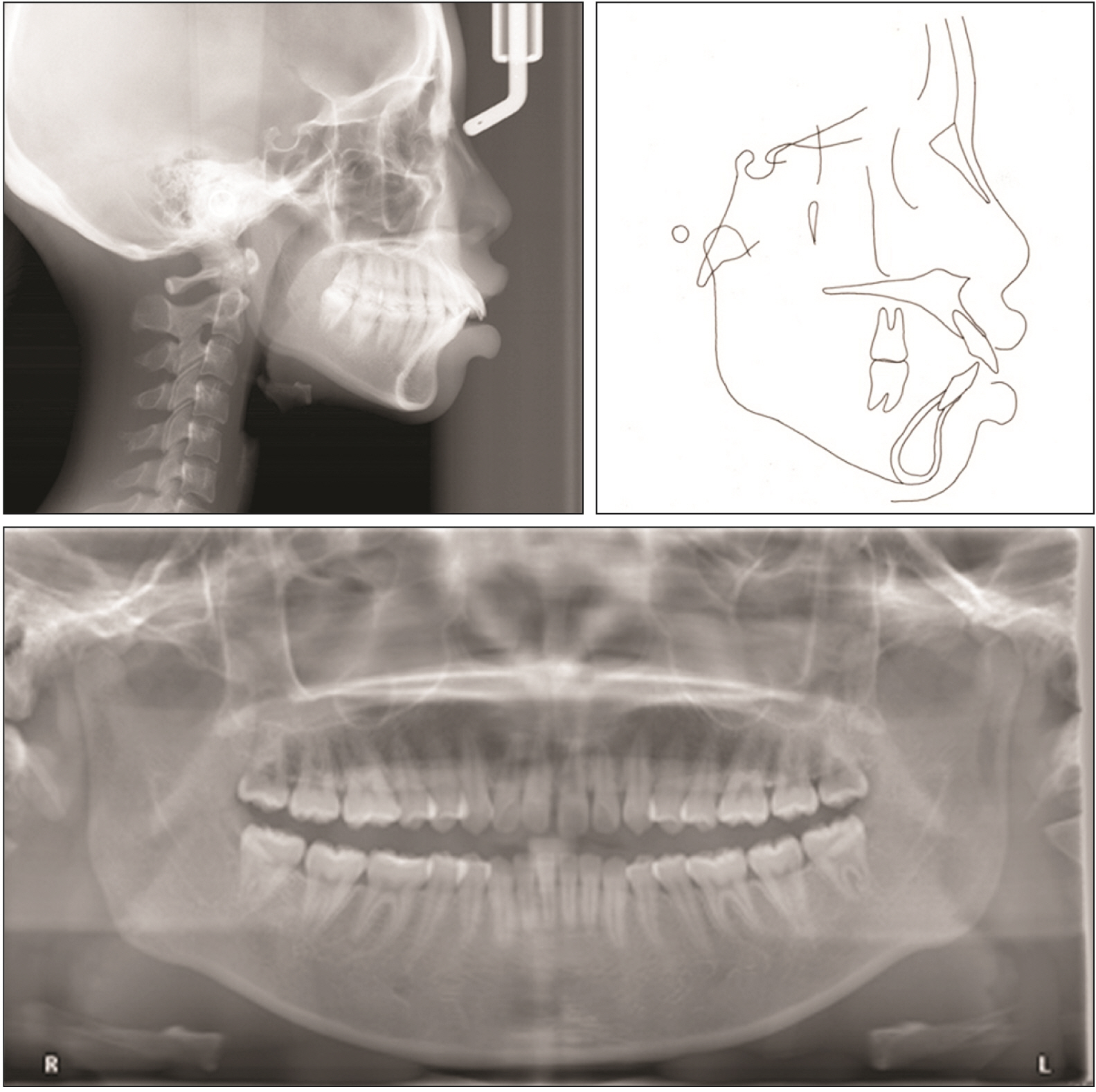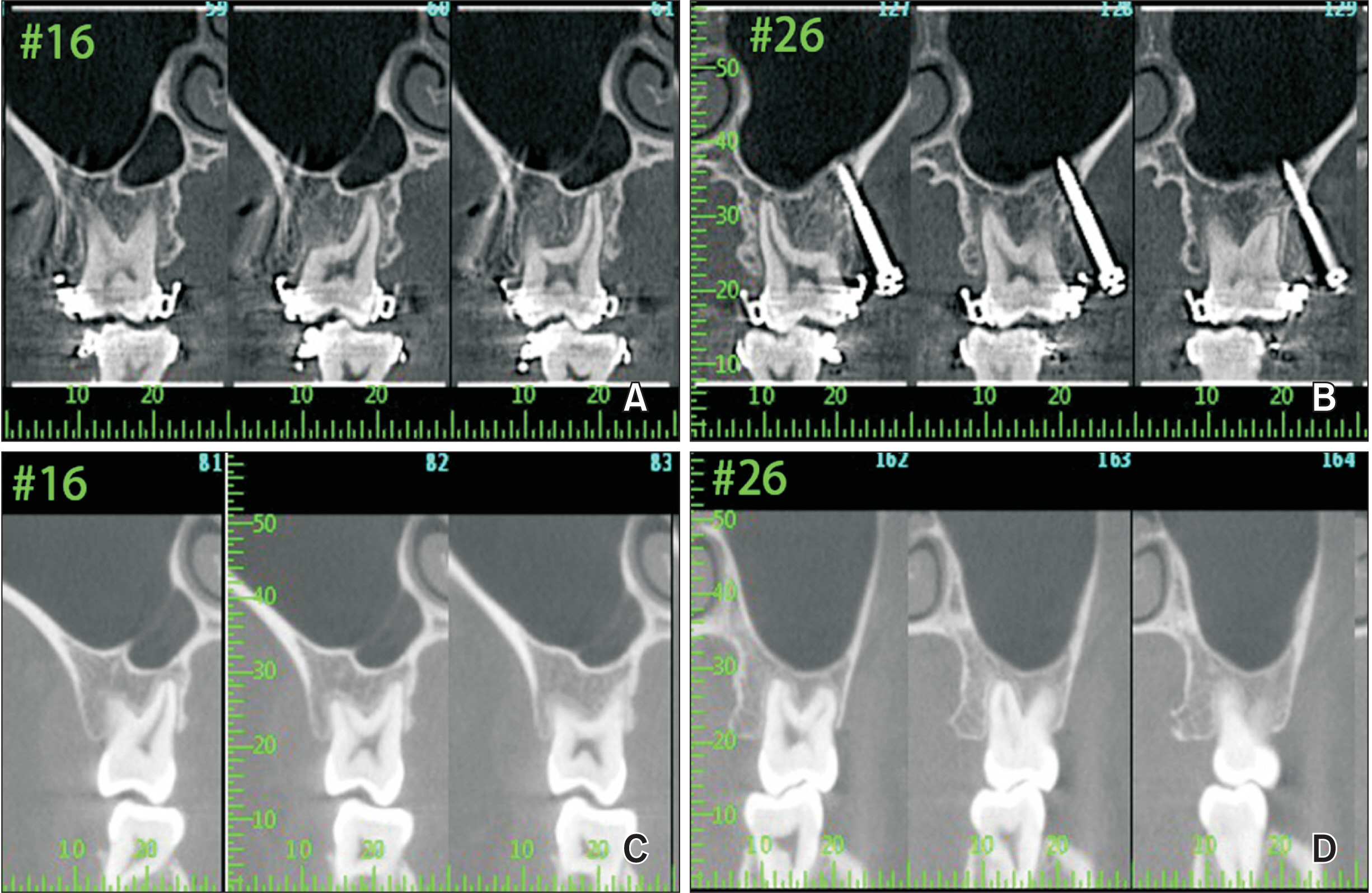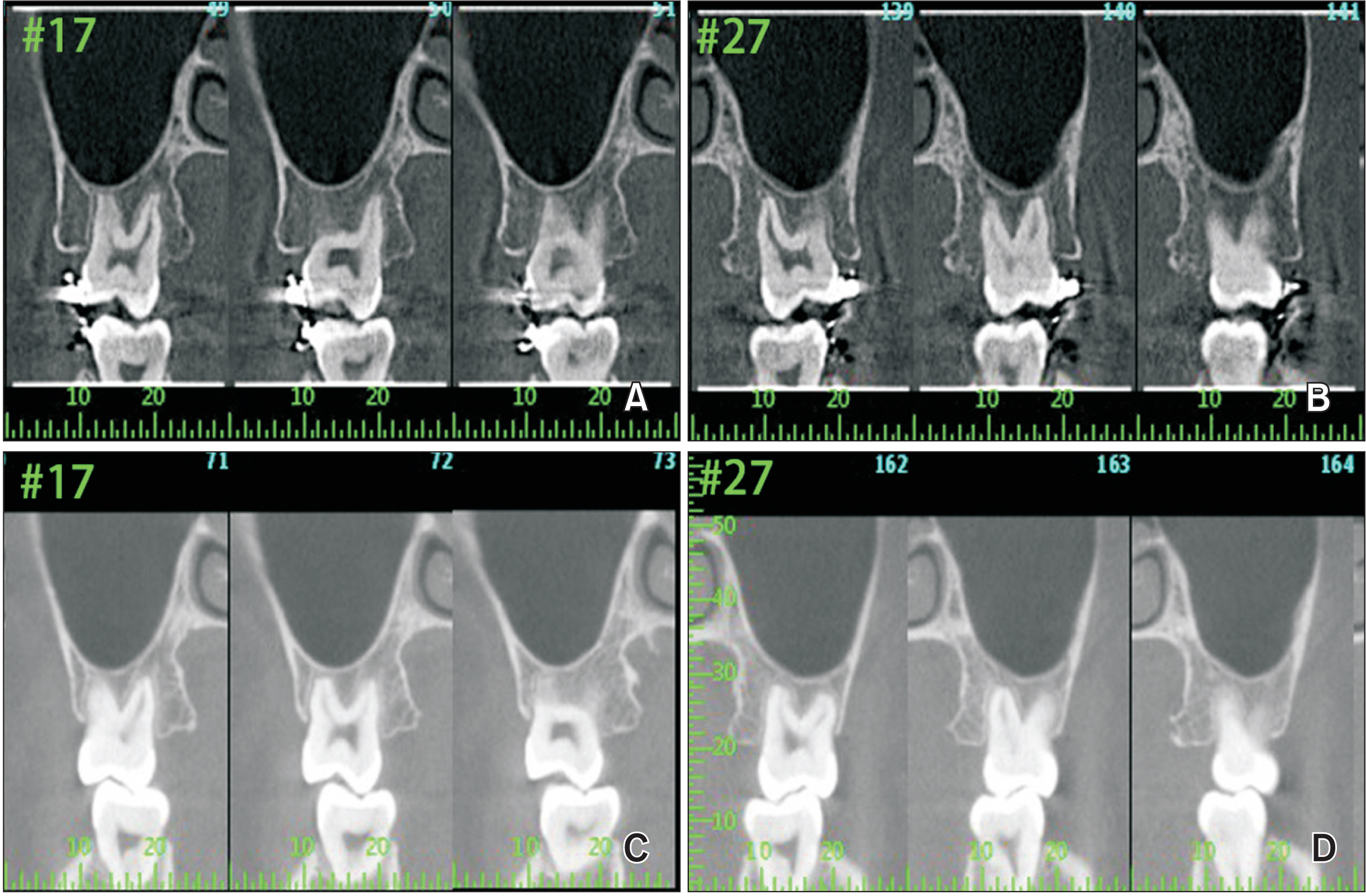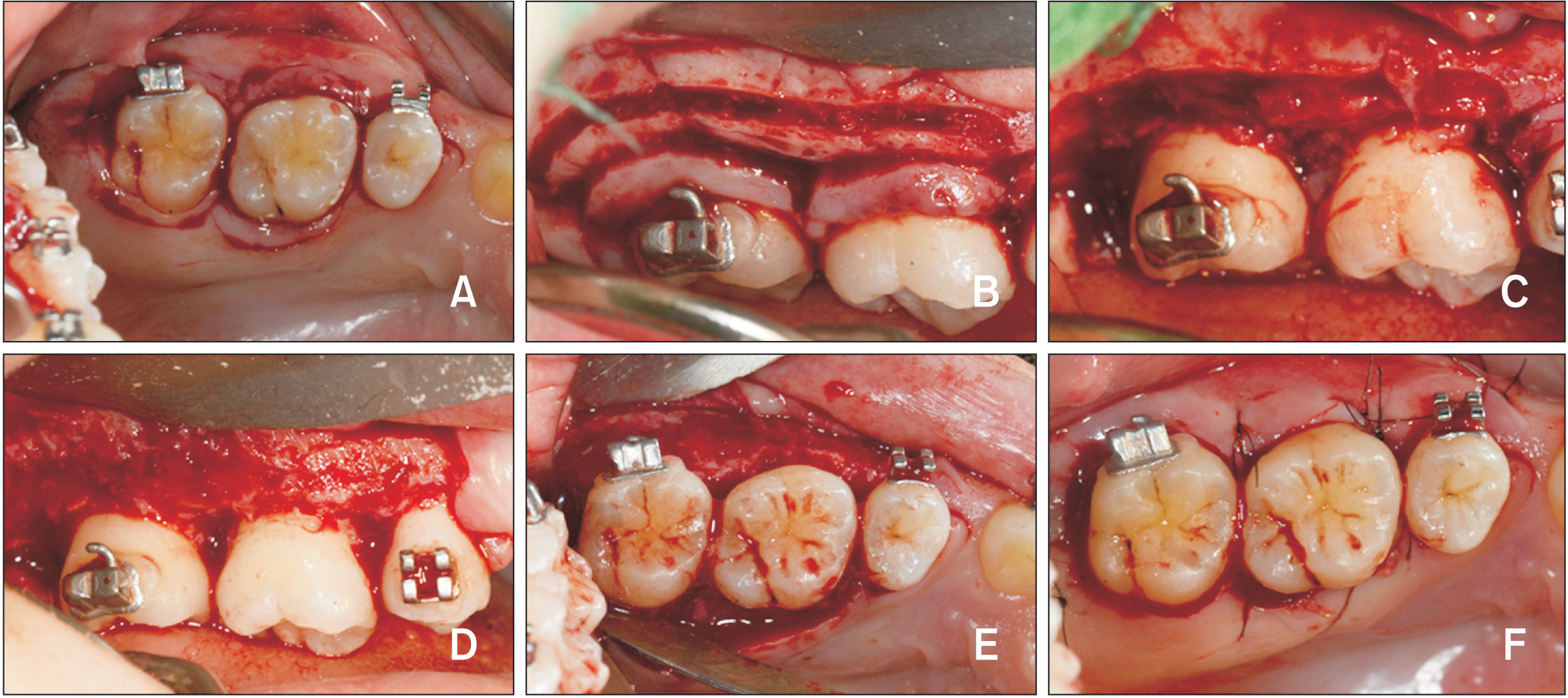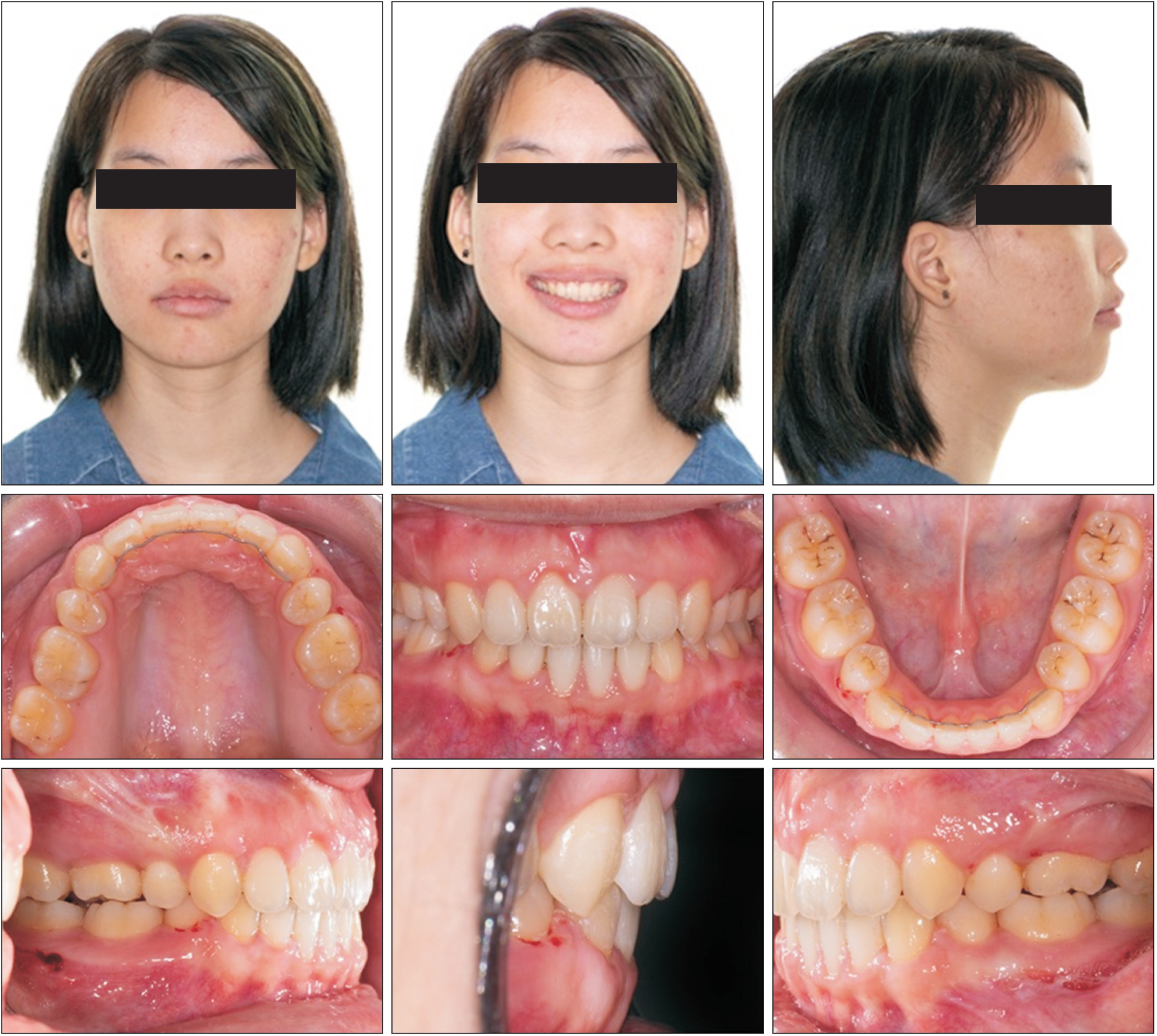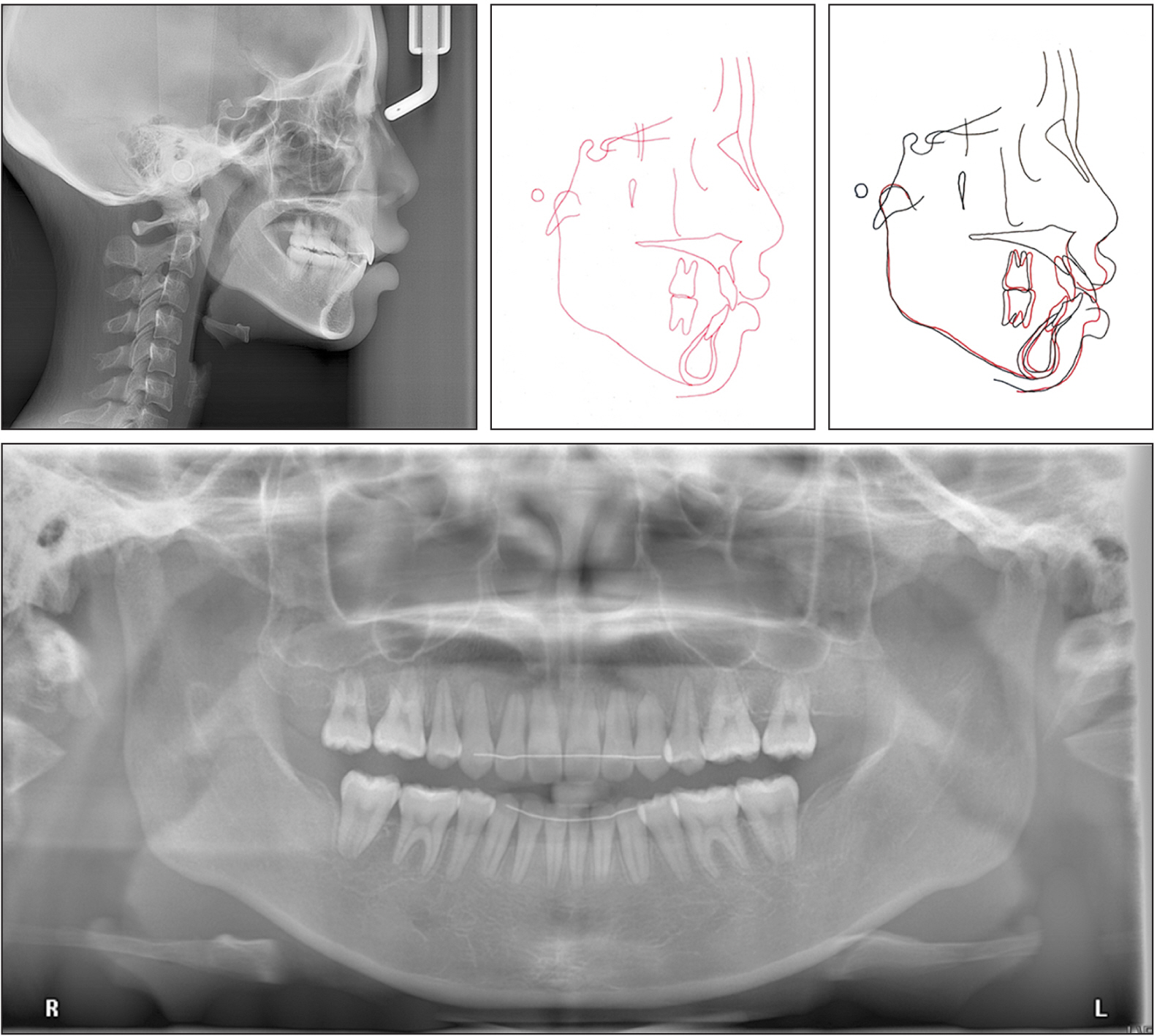Korean J Orthod.
2023 Mar;53(2):125-136. 10.4041/kjod22.150.
Histological analysis on tissues around orthodontically intruded maxillary molars using temporary anchorage devices: A case report
- Affiliations
-
- 1Division of Orthodontics, Department of Dentistry, National Taiwan University Hospital, Taipei, Taiwan
- 2Department of Periodontology, School of Dentistry, College of Medicine, National Taiwan University, Taipei, Taiwan
- 3Private Practice, New Taipei City, Taiwan
- 4Division of Oral Pathology and Diagnosis, Department of Dentistry, National Taiwan University Hospital, Taipei, Taiwan
- 5Department of Oral Pathology and Oral Diagnosis, School of Dentistry, College of Medicine, National Taiwan University, Taipei, Taiwan
- 6Graduate Institute of Clinical Dentistry, School of Dentistry, College of Medicine, National Taiwan University, Taipei, Taiwan
- 7Division of Orthodontics and Dentofacial Orthopedics, Department of Dentistry, National Taiwan University Hospital, Taipei, Taiwan
- KMID: 2540952
- DOI: http://doi.org/10.4041/kjod22.150
Abstract
- Before progress was recently made in the application of temporary anchorage devices (TADs) in bio-mechanical design, orthodontists were rarely able to intrude molars to reduce upper posterior dental height (UPDH). However, TADs are now widely used to intrude molars to flatten the occlusal plane or induce counterclockwise rotation of the mandible. Previous studies involving clinical or animal histological evaluation on changes in periodontal conditions after molar intrusion have been reported, however, studies involving human histology are scarce. This case was a Class I malocclusion with a high mandibular plane angle. Upper molar intrusion with TADs was performed to reduce UPDH, which led to counterclockwise rotation of the mandible. After 5 months of upper molar intrusion, shortened clinical crowns were noticed, which caused difficulties in oral hygiene and hindered orthodontic tooth movement. The mid-treatment cone-beam computed tomography revealed redundant bone physically interfering with buccal attachment and osseous resective surgeries were followed. During the surgeries, bilateral mini screws were removed and bulging alveolar bone and gingiva were harvested for biopsy. Histological examination revealed bacterial colonies at the bottom of the sulcus. Infiltration of chronic inflammatory cells underneath the non-keratinized sulcular epithelium was noted, with abundant capillaries being filled with red blood cells. Proximal alveolar bone facing the bottom of the gingival sulcus exhibited active bone remodeling and woven bone formation with plump osteocytes in the lacunae. On the other hand, buccal alveolar bone exhibited lamination, indicating slow bone turnover in the lateral region.
Figure
Reference
-
1. Gainsforth BL, Higley L. 1945; A study of orthodontic anchorage possibilities in basal bone. Am J Orthod Oral Surg. 31:406–17. DOI: 10.1016/0096-6347(45)90025-1.2. Brånemark PI, Hansson BO, Adell R, Breine U, Lindström J, Hallén O, et al. 1977; Osseointegrated implants in the treatment of the edentulous jaw. Experience from a 10-year period. Scand J Plast Reconstr Surg Suppl. 16:1–132. PMID: 356184.3. Creekmore TD, Eklund MK. 1983; The possibility of skeletal anchorage. J Clin Orthod. 17:266–9. PMID: 6574142.4. Yao CC, Wu CB, Wu HY, Kok SH, Chang HF, Chen YJ. 2004; Intrusion of the overerupted upper left first and second molars by mini-implants with partial-fixed orthodontic appliances: a case report. Angle Orthod. 74:550–7. DOI: 10.1043/0003-3219(2004)074<0550:IOTOUL>2.0.CO;2. PMID: 15387035.5. Kravitz ND, Kusnoto B, Tsay PT, Hohlt WF. 2007; Intrusion of overerupted upper first molar using two orthodontic miniscrews. A case report. Angle Orthod. 77:915–22. DOI: 10.2319/050106-187.1. PMID: 17902236.6. Sherwood KH, Burch JG, Thompson WJ. 2002; Closing anterior open bites by intruding molars with titanium miniplate anchorage. Am J Orthod Dentofacial Orthop. 122:593–600. DOI: 10.1067/mod.2002.128641. PMID: 12490869.7. Erverdi N, Keles A, Nanda R. 2004; The use of skeletal anchorage in open bite treatment: a cephalometric evaluation. Angle Orthod. 74:381–90. DOI: 10.1043/0003-3219(2004)074<0381:TUOSAI>2.0.CO;2. PMID: 15264651.8. Park YC, Lee HA, Choi NC, Kim DH. 2008; Open bite correction by intrusion of posterior teeth with miniscrews. Angle Orthod. 78:699–710. DOI: 10.2319/0003-3219(2008)078[0699:OBCBIO]2.0.CO;2. PMID: 18302471.9. Togawa R, Iino S, Miyawaki S. 2010; Skeletal Class III and open bite treated with bilateral sagittal split osteotomy and molar intrusion using titanium screws. Angle Orthod. 80:1176–84. DOI: 10.2319/021910-102.1. PMID: 20677972. PMCID: PMC8929500.10. Marzouk ES, Abdallah EM, El-Kenany WA. 2015; Molar intrusion in open-bite adults using zygomatic miniplates. Int J Orthod Milwaukee. 26:47–54. PMID: 26349291.11. Alsafadi AS, Alabdullah MM, Saltaji H, Abdo A, Youssef M. 2016; Effect of molar intrusion with temporary anchorage devices in patients with anterior open bite: a systematic review. Prog Orthod. 17:9. DOI: 10.1186/s40510-016-0122-4. PMID: 26980200. PMCID: PMC4803715. PMID: 2bfea0e6693d479088c4e96e5a695b05.12. Bayani S, Heravi F, Radvar M, Anbiaee N, Madani AS. 2015; Periodontal changes following molar intrusion with miniscrews. Dent Res J (Isfahan). 12:379–85. DOI: 10.4103/1735-3327.161462. PMID: 26288629. PMCID: PMC4533198. PMID: 0a618b5a98de4bf39ffe06a5fcb897fd.13. Marzouk ES, Kassem HE. 2016; Evaluation of long-term stability of skeletal anterior open bite correction in adults treated with maxillary posterior segment intrusion using zygomatic miniplates. Am J Orthod Dentofacial Orthop. 150:78–88. DOI: 10.1016/j.ajodo.2015.12.014. PMID: 27364209.14. Yao CC, Lee JJ, Chen HY, Chang ZC, Chang HF, Chen YJ. 2005; Maxillary molar intrusion with fixed appliances and mini-implant anchorage studied in three dimensions. Angle Orthod. 75:754–60. DOI: 10.1043/0003-3219(2005)75[754:MMIWFA]2.0.CO;2. PMID: 16279822.15. Daimaruya T, Takahashi I, Nagasaka H, Umemori M, Sugawara J, Mitani H. 2003; Effects of maxillary molar intrusion on the nasal floor and tooth root using the skeletal anchorage system in dogs. Angle Orthod. 73:158–66. DOI: 10.1043/0003-3219(2003)73<158:EOMMIO>2.0.CO;2. PMID: 12725372.16. Kanzaki R, Daimaruya T, Takahashi I, Mitani H, Sugawara J. 2007; Remodeling of alveolar bone crest after molar intrusion with skeletal anchorage system in dogs. Am J Orthod Dentofacial Orthop. 131:343–51. DOI: 10.1016/j.ajodo.2006.04.025. PMID: 17346589.17. Graber LW, Vanarsdall RL Jr., Vig KWL. 2011. Orthodontics: current principles and techniques. 5th ed. Mosby;Louis: DOI: 10.1016/0002-9416(85)90010-7.18. Sugawara J, Baik UB, Umemori M, Takahashi I, Nagasaka H, Kawamura H, et al. 2002; Treatment and posttreatment dentoalveolar changes following intrusion of mandibular molars with application of a skeletal anchorage system (SAS) for open bite correction. Int J Adult Orthodon Orthognath Surg. 17:243–53. PMID: 12592995.19. Murakami T, Yokota S, Takahama Y. 1989; Periodontal changes after experimentally induced intrusion of the upper incisors in Macaca fuscata monkeys. Am J Orthod Dentofacial Orthop. 95:115–26. DOI: 10.1016/0889-5406(89)90390-9. PMID: 2916468.20. Hong SY, Shin JW, Hong C, Chan V, Baik UB, Kim YH, et al. 2019; Alveolar bone remodeling during maxillary incisor intrusion and retraction. Prog Orthod. 20:47. DOI: 10.1186/s40510-019-0300-2. PMID: 31867679. PMCID: PMC6926139. PMID: e0480c60d993430db766b7c0b195b316.21. Newman MG, Takei H, Klokkevold PR, Carranza FA. 2015. Carranza's clinical periodontology. 12th ed. Elsevier Science;St. Louis:22. da Silva VC, Cirelli CC, Ribeiro FS, Leite FR, Benatti Neto C, Marcantonio RA, et al. 2008; Intrusion of teeth with class III furcation: a clinical, histologic and histometric study in dogs. J Clin Periodontol. 35:807–16. DOI: 10.1111/j.1600-051X.2008.01293.x. PMID: 18662302.23. Chung CJ, Jang W, Piers C, Lee DW, Hwang S, Kim KH, et al. 2019; Differential alveolar bone modeling after orthodontic retraction. J Am Dent Assoc. 150:313–20. DOI: 10.1016/j.adaj.2018.12.029. PMID: 30922461.24. Weltman B, Vig KW, Fields HW, Shanker S, Kaizar EE. 2010; Root resorption associated with orthodontic tooth movement: a systematic review. Am J Orthod Dentofacial Orthop. 137:462–76. discussion 12ADOI: 10.1016/j.ajodo.2009.06.021. PMID: 20362905.25. Moon CH, Wee JU, Lee HS. 2007; Intrusion of overerupted molars by corticotomy and orthodontic skeletal anchorage. Angle Orthod. 77:1119–25. DOI: 10.2319/092705-334.1. PMID: 18004918.26. Bellini-Pereira SA, Almeida J, Aliaga-Del Castillo A, Dos Santos CCO, Henriques JFC, Janson G. 2021; Evaluation of root resorption following orthodontic intrusion: a systematic review and meta-analysis. Eur J Orthod. 43:432–41. DOI: 10.1093/ejo/cjaa054. PMID: 32968763.27. Kuroda S, Katayama A, Takano-Yamamoto T. 2004; Severe anterior open-bite case treated using titanium screw anchorage. Angle Orthod. 74:558–67. DOI: 10.1043/0003-3219(2004)074<0558:SAOCTU>2.0.CO;2. PMID: 15387036.28. Lee HA, Park YC. 2008; Treatment and posttreatment changes following intrusion of maxillary posterior teeth with miniscrew implants for open bite correction. Korean J Orthod. 38:31–40. DOI: 10.4041/kjod.2008.38.1.31.29. Baek MS, Choi YJ, Yu HS, Lee KJ, Kwak J, Park YC. 2010; Long-term stability of anterior open-bite treatment by intrusion of maxillary posterior teeth. Am J Orthod Dentofacial Orthop. 138:396.e1–e9. DOI: 10.1016/j.ajodo.2010.04.023. PMID: 20889043.30. González Espinosa D, de Oliveira Moreira PE, da Sousa AS, Flores-Mir C, Normando D. 2020; Stability of anterior open bite treatment with molar intrusion using skeletal anchorage: a systematic review and meta-analysis. Prog Orthod. 21:35. DOI: 10.1186/s40510-020-00328-2. PMID: 32888097. PMCID: PMC7474024. PMID: a91612bfb3a442b38c7e6d75ab4cdad8.
- Full Text Links
- Actions
-
Cited
- CITED
-
- Close
- Share
- Similar articles
-
- Nonextraction treatment of Class II division 2 in an adult patient using microimplant anchorage (MIA)
- Effectiveness of anchorage with temporary anchorage devices during anterior maxillary tooth retraction: A randomized clinical trial
- Orthodontic Traction of the Permanent Molar Using Skeletal Anchorage: A Case Report
- Three-dimensional analysis of the distal movement of maxillary 1st molars in patients fitted with mini-implant-aided trans-palatal arches
- Maxillary protraction treatment of skeletal Class III children using miniplate anchorage


